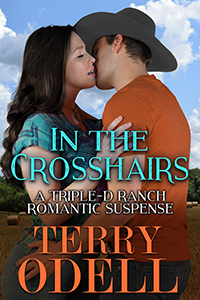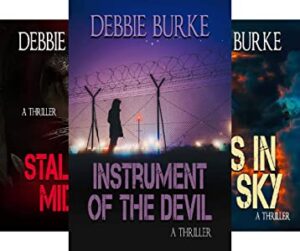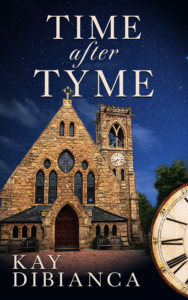
You better make them care…It better be quirky or perverse or thoughtful enough so that you hit some chord in them. Otherwise, it doesn’t work. I mean we’ve all read pieces where we thought, “Oh, who gives a damn?” — Nora Ephron.
I feel like now people want more of a mirror. They want to see themselves in the book that they’re reading. — David Sedaris
By PJ Parrish
Well, it’s officially Christmas season. I know this because Ralphie is whining about getting a Red Ryder air rifle. Every time A Christmas Story comes on, I am reminded of my own childhood. But I’m also reminded how dependent writers are on our powers of observation and also our storehouses of life experience. And how we use that to connect with our readers.
This point is especially clear to me because I’ve been reading Nora Ephron’s Wallflower at the Orgy, her dispatches as a reporter about the cultural upheavals of the late ’60s. Here’s the opening:
Some years ago, the man I am married to told me he had always had a mad desire to go to an orgy. Why on earth, I asked. Why not, he said. Because, I replied, it would be just like the dances at the YMCA I went to in the seventh grade—only instead of people walking past me and rejecting me, they would be stepping over my naked body and rejecting me. The image made no impression at all on my husband. But it has stayed with me—albeit in another context. Because working as a journalist is exactly like being the wallflower at the orgy. I always seem to find myself at a perfectly wonderful event where everyone else is having a marvelous time, laughing merrily, eating, drinking, having sex in the back room, and I am standing on the side taking notes on it all.

Nora Ephron, director (Photo by Vera Anderson/WireImage)
Which pretty much summarized how I often felt during the ’60s and later when I worked as a reporter. But that’s the beauty of a great writer like Ephron, and why I am drawn to essayists. They see things more sharply than average folk. And they spin what they see into great stories that anyone can relate to. Which is pretty much what we novelists should be trying to do.
You have to connect. But easier said than done, as any writer knows. I remember reading a First Novel Edgar winner a couple years back. Man, the writing just sang! Gorgeous description, a lean neo-noir sensibility. But I always felt as if the writer was holding back emotionally. And this arms-length style eventually left me thinking, “who gives a damn?”
You have to connect. Some things to think about as you grapple with this.
Make your subject relatable in experience. Nora Ephron wrote a terrific essay called “A Few Words About Breasts.” It was about her agony, as a tomboy, waiting for her breasts to “develop.” When she begged her mother for a bra, her mom said “What for?” She recounts the horror of going alone to the department store and getting fitted for a size 28AA. When I read it, I was smiling, nodding and ultimately crying.
Many moons later, I happened upon her essay on aging gracefully called “On Maintenance.” Best line about how getting hair highlights changed her life: “…a little like that first brandy Alexander Lee Remick drank in Days of Wine and Roses.”
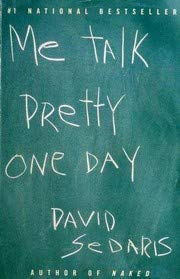
Use Your Experiences to Find Your Own Voice. Another of my favorite writers is also an essayist — David Sedaris. Why do his essays connect with readers? Because he writes with wit and humility of his own experiences. He is a storyteller you want to spend your hours with. His essay on learning French “Me Talk Pretty One Day” articulated all the terror I felt in my first French adult ed course: “Learning French is a lot like joining a gang in that it involves a long and intensive period of hazing.” I’m now taking online Babbel courses now and every time I am “buzzed” for incorrect pronunciation — I have a heavy Detroit/Michigan accent, so I will never say anything in French pretty — I think of Sedaris. He’s got some really good advice for writers. Click here. This one is among my favorites:
Sad stories, dashed dreams, and memorable mistakes are ammunition for writers. Any experience can be converted into a story, and rough experiences often make the best stories. As a writer, failure is soil for growing heartfelt stories. Vulnerability is a powerful draw. Write down your biggest failures, then review the list to see which ones can be marshaled into relatable stories for your readers.
And about that voice thing? Don’t sweat it too much. When you’re just starting out, you might not be able to articulate exactly what you are trying, in your heart and soul, to get across. So be content with trying to become the best damn storyteller you can. If you are successful at that, the voice thing will emerge by itself. As Neil Gaiman says:
After you’ve written 10,000 words, 30,000 words, 60,000 words, 150,000 words, a million words, you will have your voice, because your voice is the stuff you can’t help doing.”
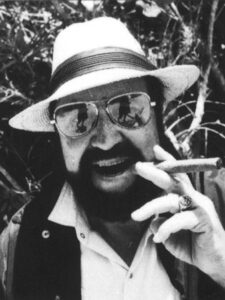
Which leads me to my final essayist who influenced me as a writer. I first encountered Jean Shepherd’s writing in the ’70s when I was reading Car & Driver magazine. (don’t ask…my ex-husband, a race car nut from Indy was a subscriber.) I loved his columns. He went on to write for Playboy, New York Times and others. Time magazine once described him as a “comic anthropologist.” His talent was noticing and using the mundane details of daily life to tell his stories, filtering them through a sensibility that was, by turns, funny, absurd, sarcastic, and often sad. (For the record, Shepherd hated the word “nostalgia.” I found this out when I interviewed him for a profile in the Fort Lauderdale News.)
I loved his short story about the awful rites of prom-going, “Wanda Hickey’s Night of Golden Memories” because every detail is acute. And also because I was poor pitiful Wanda:
I began to notice Wanda’s orchid leering up at me from her shoulder. It was the most repulsive flower I had ever seen. At least 14 inches across, it looked like some kind of overgrown Venus’s flytrap waiting for the right moment to strike. Deep purple, with an obscene yellow tongue that stuck straight out of it, and greenish knobs on the end, it clashed almost audibly with her turquoise dress. It looked like it was breathing, and it clung to her shoulder as if with claws.
As I glided back and forth in my graceful box step, my left shoulder began to develop an itch that helped take my mind off of the insane itch in my right shoulder, which was beginning to feel like army of hungry soldier ants on the march. The contortions I made to relieve the agony were camouflaged nicely by a short sneezing fit brought on by the orchid, which was exhaling directly into my face. So was Wanda, with a heady essence of Smith Brothers cough drops and sauerkraut.
But Shepherd is best known for A Christmas Story. You’ve seen it. It runs on a loop during the holidays, the 1983 movie about Ralphie, his long-suffering chenille-robed mom and his old man who lusts after a lamp in the shape of a fish-netted gam. The movie is based on some chapters from Shepherd’s first book In God We Trust (All Others Pay Cash), which were based on Shepherd’s childhood in Hammond, Ind. Why is the movie evergreen? Here’s what Shepherd told an interviewer in 1971:
“You can tell a story about anything. But the only stories that have any fidelity, any feeling, are stories that either did happen to you or conceivably could have happened to you.”
In other words, to be a great storyteller, you have to connect. Merry Christmas, y’all.


 Misdirection is the intentional deflection of attention for the purpose of disguise, and it’s a vital literary device. To plant and disguise a clue so the reader doesn’t realize its importance takes time and finesse.
Misdirection is the intentional deflection of attention for the purpose of disguise, and it’s a vital literary device. To plant and disguise a clue so the reader doesn’t realize its importance takes time and finesse.
 Character misdirection is when the protagonist (and reader) believes a secondary character fulfills one role when, in fact, he fulfills the opposite.
Character misdirection is when the protagonist (and reader) believes a secondary character fulfills one role when, in fact, he fulfills the opposite.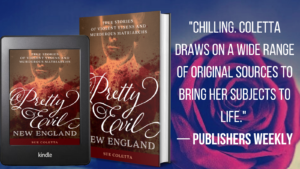 Female killers are often portrayed as caricatures: Black Widows, Angels of Death, or Femme Fatales. But the real stories of these women are much more complex. In Pretty Evil New England, true crime author Sue Coletta tells the story of these five women, from broken childhoods to first brushes with death, and she examines the overwhelming urges that propelled these women to take the lives of more than one-hundred innocent victims. If you enjoy narrative nonfiction/true crime,
Female killers are often portrayed as caricatures: Black Widows, Angels of Death, or Femme Fatales. But the real stories of these women are much more complex. In Pretty Evil New England, true crime author Sue Coletta tells the story of these five women, from broken childhoods to first brushes with death, and she examines the overwhelming urges that propelled these women to take the lives of more than one-hundred innocent victims. If you enjoy narrative nonfiction/true crime, 
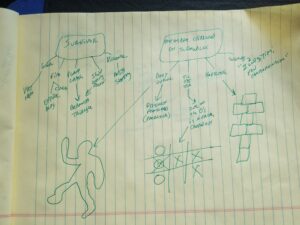


 Did you ever say this? “I’m trying to write a short story, but I’m blocked. I’m getting nowhere.”
Did you ever say this? “I’m trying to write a short story, but I’m blocked. I’m getting nowhere.”
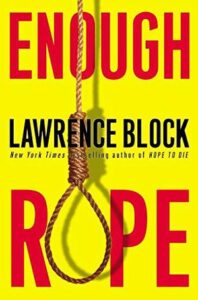 “This Crazy Business of Ours”
“This Crazy Business of Ours”


 – No more stories about husbands who kill wives, or vice versa.
– No more stories about husbands who kill wives, or vice versa.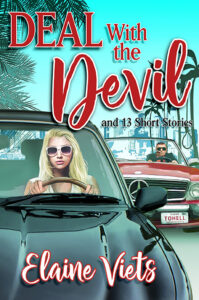
 Since everyone’s probably busy with holiday prep (unless you’re like me and your holiday is over), gift giving is or was part of the mix. Today, I’m talking about gifts authors can give to readers. Reader Magnets.
Since everyone’s probably busy with holiday prep (unless you’re like me and your holiday is over), gift giving is or was part of the mix. Today, I’m talking about gifts authors can give to readers. Reader Magnets.

